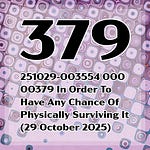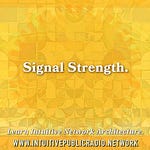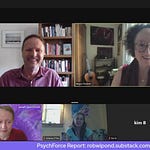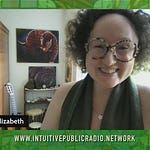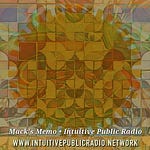Good morning. It's Day 2. :-)
The "What's the hard part?" conversation has continued to unfold intriguingly. There are a number of intersections that go along with this; one very important element is how invisible neurological injury and trauma can be in those who are disabled or have survived trauma.
When someone experiences neurological injury -- which trauma itself is, inherently, as it damages at least the verbal parts of the brain and usually more parts of the brain and body as well -- their communications will often change in unexpected ways.
This creates a level of hardship that can be totally unrecognized by the people around them, who might by confused or misinformed about what those styles of communication mean.
For instance, many trauma survivors and those disabled by neurological injury are labeled with mistaken or inappropriate diagnoses (by professionals, family, or community members) that bring in potentially harmful assumptions or mental illness stigmas, compounding the original trauma or injury and making it much more difficult for the severely affected person to communicate with those around her.
People who have survived trauma and neurological disablement often must take more time to complete tasks or fulfill communications needs than others expect -- and their processes may be quite different than that of others around them. This means that the requirements for interactions in community spaces may inherently prevent trauma survivors and neurologically disabled people from participating.
The truth is, we need the people in our communities who have experienced hardship. We need their lived experience and wisdom; we need their know-how and special capacity for solving difficult problems. We need the diversity and nourishing vitality of their living-being-ness in our community environments, helping us know more about one another and ourselves at the same time.
And many people do find it hard to understand what these individuals and families have gone through -- especially because of the differences in communications, languaging, and social interaction that occur when trauma and neurological injury are in play.
At the same time, it is relational neurological repair that makes all the difference for these survivors -- ongoing communications connectivity in a context where one has a sense of belonging, purpose, and that one's strengths are recognized in respectful, caring community spaces.
Over time, this allows them to communicate much more fluently in languages that other community members can recognize, understand, and respond to; it also allows the community to benefit from the nutrients of different and valuable communication styles.
We have the solution for some of our most difficult problems right here, in the relationships we build with one another when we care for the people around us.
One of the things we discuss with the communities we work with in terms of architectural and procedural adjustments they can make to ensure the physical safety of the most vulnerable and intersectionalized members of their communities... is how they can strengthen and broaden inclusive lines of communication.
How can neurologically injured community members reach out to the community to share their experience, especially when violence or significant hardship are occurring that may harm more other community members if it is not known or addressed?
How can community members be supported in learning how to understand, uplift, and amplify communications from severely affected people so that all can benefit?
What are the ways that community leadership encourages community members to learn more together, practice patience and respect for one another, and how to respond in situations where they're not sure what to do?
Many people have found in the very worst of emergency situations that their only knowledge of what to do in a crisis is to rely on systems that have been implemented in the midst of the community from outside the community -- for instance, care systems marketed by large organizations that do not have any stake in the community's own well-being or interpersonal relationships.
These can sometimes help, but where they do not help, the harms are obscured and made invisible because the people who are most severely affected become less and less able to communicate normatively the more they experience the compounding of already traumatic situations.
We've found that this isn't just a topic of how we relate to one another on a one-on-one or on an interpersonal community level. It's a marketing conversation!
What marketing cues have we received that have inclined us to think there were resources for community members in distress... that actually weren't there, or weren't applicable, when those community members really needed them?
What marketing cues do we get to create together to help more people learn to listen more closely, treat one another with more kindness and consideration, and build collaborations that bring in all the wonderful strengths of community members who might not ever be known or embraced otherwise?
This is what I've been thinking about this morning. I'm very interested in others' senses, experiences, questions, and ideas about it.
Thank you for reading Day 2!




